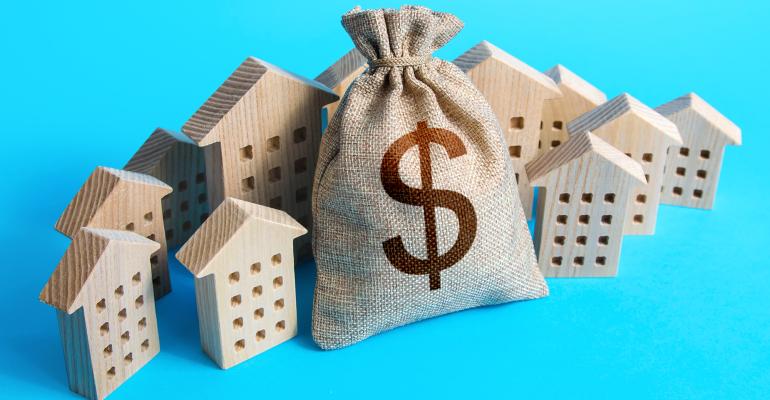In an era of low interest rates and easy money, it was easy for multifamily investors to fill the capital stack on deals. Loan-to-value (LTV) ratios of 65 percent or more on senior debt were common, and the rest could be filled with equity, preferred equity or some kind of bridge financing, all at fairly low rates.
A new, higher interest rate environment and more cautious lenders have dropped LTV ratios on senior debt down and that debt is more costly. That’s creating bigger gaps to fill either with an investor’s own equity or with more bridge financing solutions. That’s making it hard for some deals to pencil out at all.
It’s also putting apartment investors of all types who have expiring debt that needs to be refinanced in a bind. As interest rates rise, every extra basis point adds to the burden of mortgage payments for properties with floating rate debt. Even with the rapid gains in multifamily rental income in the past two years, their properties are not generating enough cash to support the growing cost of loans they planned to take out.
Investors who took out large loans compared to the value of their properties—sometimes provided by the most aggressive private equity lenders—may also face problems if the value of their property drops in the capital crunch, particularly if they need to refinance.
That’s where private debt funds may be stepping in. Private debt funds have billions of dollars in “dry powder” that might provide gap capital to apartment properties—for the right price. Even with rates rising, through the third quarter, investor-driven lenders originations volume on commercial real estate was up 18 percent over. For the quarter itself, volume was down 8 percent year-over-year, showing some signs of slowing. But even that reduced clip of originations amounted to six times the volume the sector was putting out in an average quarter back in 2001.
“There is a lot of dry powder out there. Frankly, I think some groups are licking their chops getting ready,” says Cody Kirkpatrick, managing director and head of joint venture equity and structured capital in the western U.S. for Berkadia, working in the firm's Denver offices. “Right now, those take-out loans are not sizing. There is likely to be a need for an infusion of fresh capital.”
Rising interest rates, swelling cap rates strain deals
So far, the Federal Reserve’s move to raise rates to help tame inflation have pushed the 30-day Secured Overnight Financing Rate (SOFR) from close to zero to 380 basis points, as of early December. For senior loans provided by debt funds, all-in interest rates are now several percentage points higher than they were just a year ago.
“Most of these loans from bridge lenders and debt funds are in the 60 to 70 percent loan-to-total-cost range with pricing ranging from the approximately 300 basis points over SOFR range at lower leverage to 375 to 425 basis points over SOFR at the higher end of that scale," says Michael Cosby, managing director for JLL Capital Markets, working in the firm's Dallas offices.
If they need it, borrowers can also turn to debt funds to provide mezzanine financing or preferred equity to add to the capital stack. However, the tallest stacks of capital still add up to less than properties could get a year ago—currently topping out at around 80 percent of the total value of a property or cost of an investment.
“We're typically seeing 80 percent as the new 90 percent,” says Berkadia’s Kirkpatrick. Preferred equity providers typically demand a fixed 6 percent or 7 percent current yield on their investment for operating assets with an additional accrual component. “Preferred equity has widened no doubt about it in terms of pricing … we got really aggressive last year and in the first quarter of this year,” he says. “We've seen pricing come up probably at least 200 basis points.”
Many borrowers need extra capital
Apartment properties still have a lot of choices for where to find financing from Freddie Mac and Fannie Mae lenders, banks, life companies and debt funds—though the loans are typically smaller relative to the value of the property.
“All groups are still active, but they are more selective, as there is a more limited field of players for larger loans,” says JLL’s Cosby. “Multi-housing is still the preferred asset class for most lenders, so all types of lenders are available.”
The rapid rise in borrowing costs has shocked many dealmakers, however.
“The volume of transaction activity has meaningfully slowed through Q4. We have also seen a tapering in planned new supply given much more stringent construction lending and equity underwrite,” says Nate Sittema, vice chairman of the Debt and Structured Finance Group at CBRE, working in the firm's Charlotte, N.C., offices. “Many are looking for more rate stability to ascertain sustainable market values into next year."
The deals that are going forward are often stressed by higher interest costs. “Given current rates, and the universal attention given to debt service coverage ratios, proceed levels remain relatively low across the board,” says Sittema.





